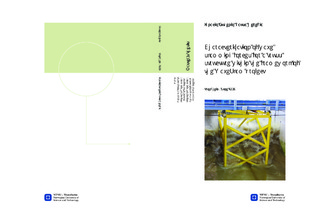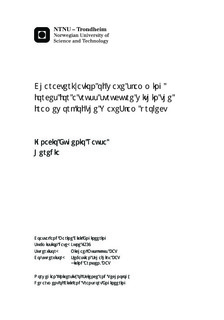| dc.contributor.advisor | Muskulus, Michael | nb_NO |
| dc.contributor.advisor | Schafhirt, Sebastian | nb_NO |
| dc.contributor.advisor | Arntsen, Oivind | nb_NO |
| dc.contributor.author | Rausa Heredia, Ignacio Eugenio | nb_NO |
| dc.date.accessioned | 2014-12-19T11:33:13Z | |
| dc.date.available | 2014-12-19T11:33:13Z | |
| dc.date.created | 2014-06-27 | nb_NO |
| dc.date.issued | 2014 | nb_NO |
| dc.identifier | 730494 | nb_NO |
| dc.identifier | ntnudaim:11734 | nb_NO |
| dc.identifier.uri | http://hdl.handle.net/11250/232873 | |
| dc.description.abstract | The foundations of offshore wind turbines in shallow water are predominantly truss structures which are exposed to wave slamming forces. In these situations the design of the structure is governed by high and rapid impacts which usually are larger than Morison forces. These forces depend, among other parameters, on the slamming factor C_s that has been ranged by most researchers between π -2π. So far, several researches about slamming forces have been done for monopod structures, but still a long way to go regarding truss structures.This master thesis is based on the WaveSlam project in which an instrumented multi-membered truss model has been subjected to hundreds of both regular and irregular waves. The experiments have been performed in the large wave flume at FZK Hannover in 2013. The tested structure was equipped with force transducers along the bracings and columns that measured the structure response from the breaking waves.The initial goal of this research project is to characterize the breaking wave forces acting on the front bracings in order to get the slamming factors associated to them. For that purpose the structure tested in Hannover has been modelled and validated in ANSYS (1:8)An initial analysis of the data shows an average time delay in the impact of the wave front. This time delay is around 0.003 s for the points located at the same height in the front bracings.Using the recreation of the truss structure in ANSYS a wave run test is analyzed. Throughout a fitting procedure, the response from ANSYS and from the data are matched with a relative error of 3%.The wave loads have been defined as uniform loads acting along the bracings. The total load duration for those breaking wave loads goes from 0.0049 to 0.007 seconds. These values agree with the expected duration found in the literature. From this initial analysis a slamming factor of Cs= 4.78 is found in the highest part of the front instrumented bracings. The characterization of more breaking wave loads is recommended in order to get an estimate of the largest slamming factor. | nb_NO |
| dc.language | eng | nb_NO |
| dc.publisher | Institutt for bygg, anlegg og transport | nb_NO |
| dc.title | Characterization of wave slamming forces for a truss structure within the framework of the WaveSlam project | nb_NO |
| dc.type | Master thesis | nb_NO |
| dc.source.pagenumber | 180 | nb_NO |
| dc.contributor.department | Norges teknisk-naturvitenskapelige universitet, Fakultet for ingeniørvitenskap og teknologi, Institutt for bygg, anlegg og transport | nb_NO |

